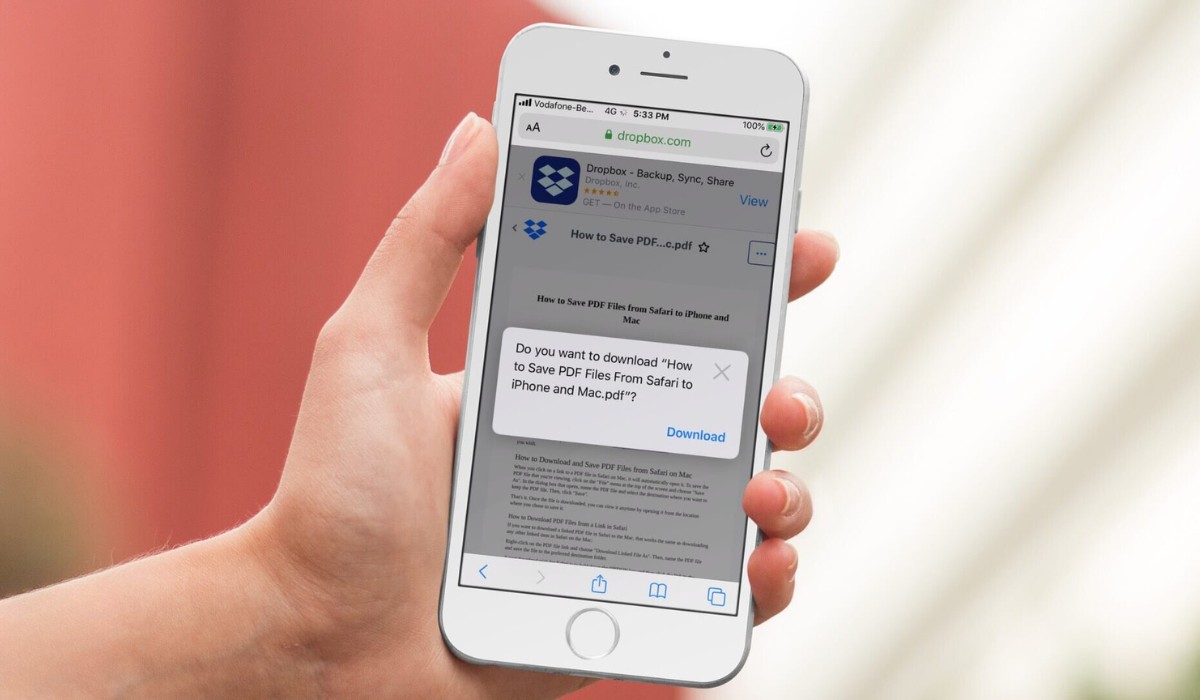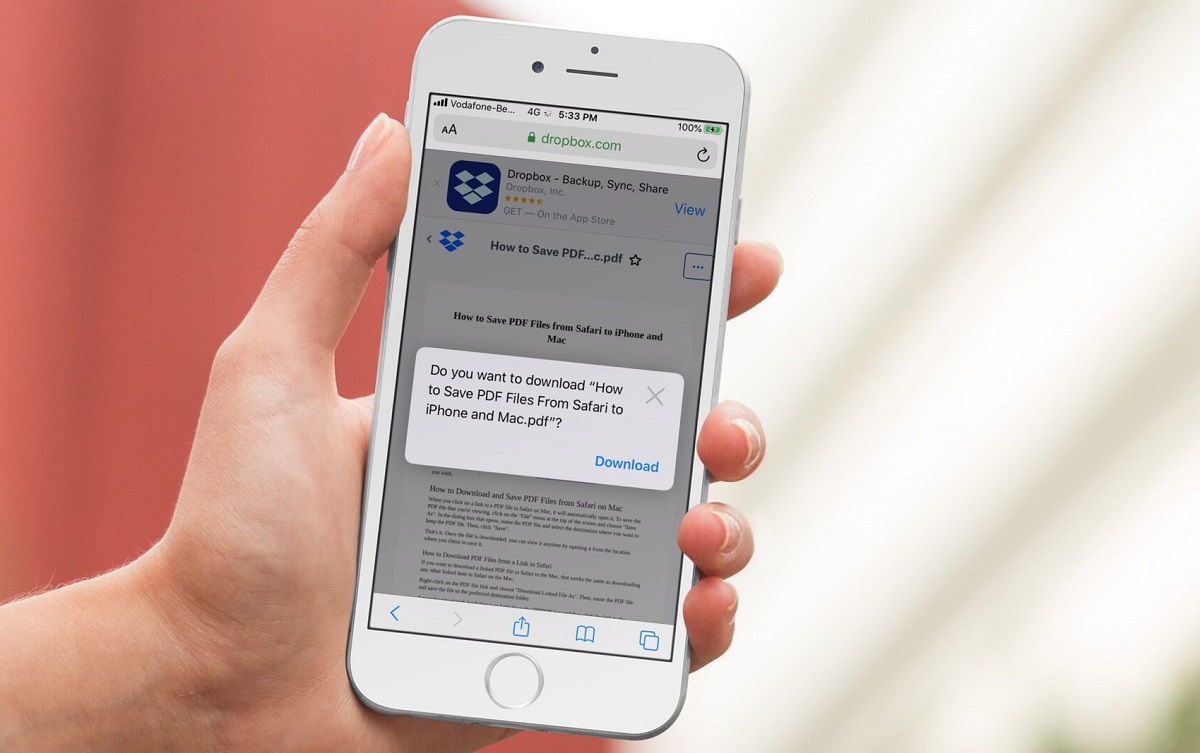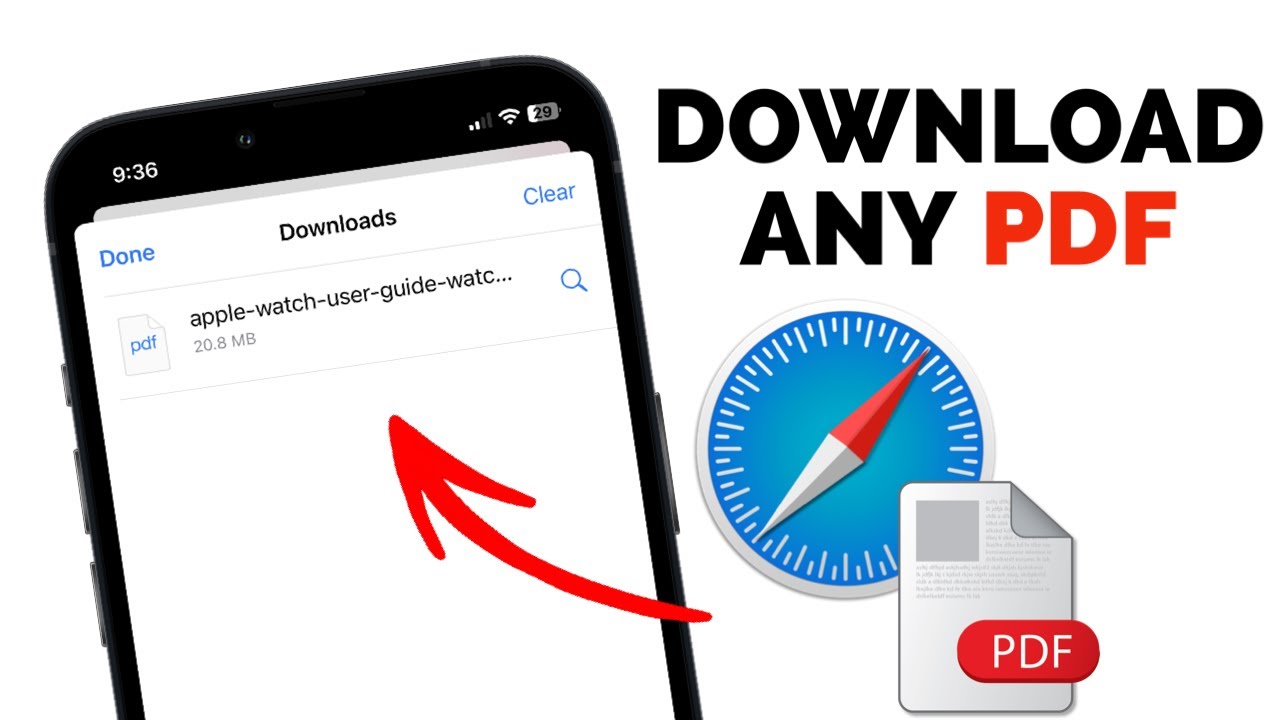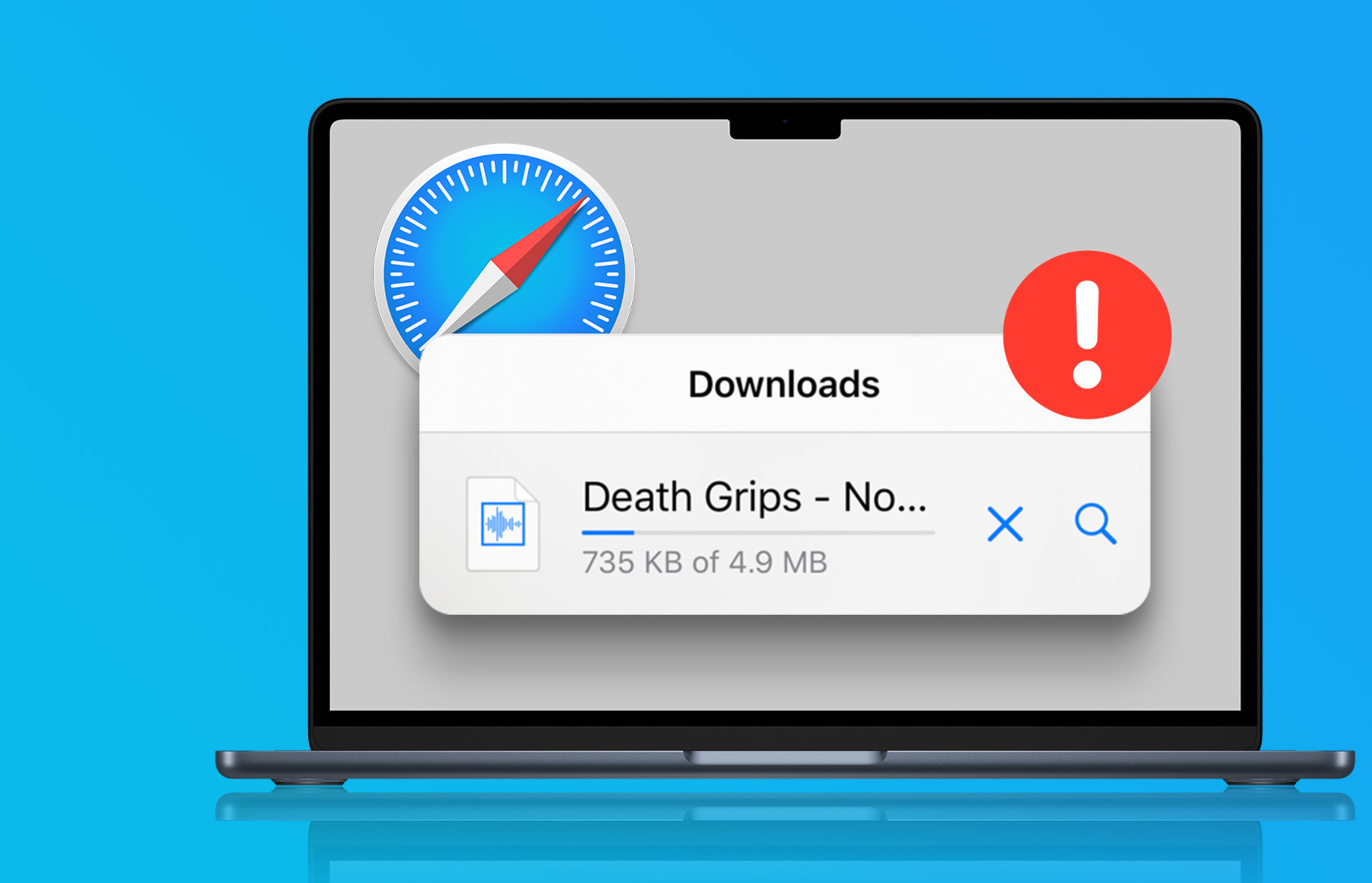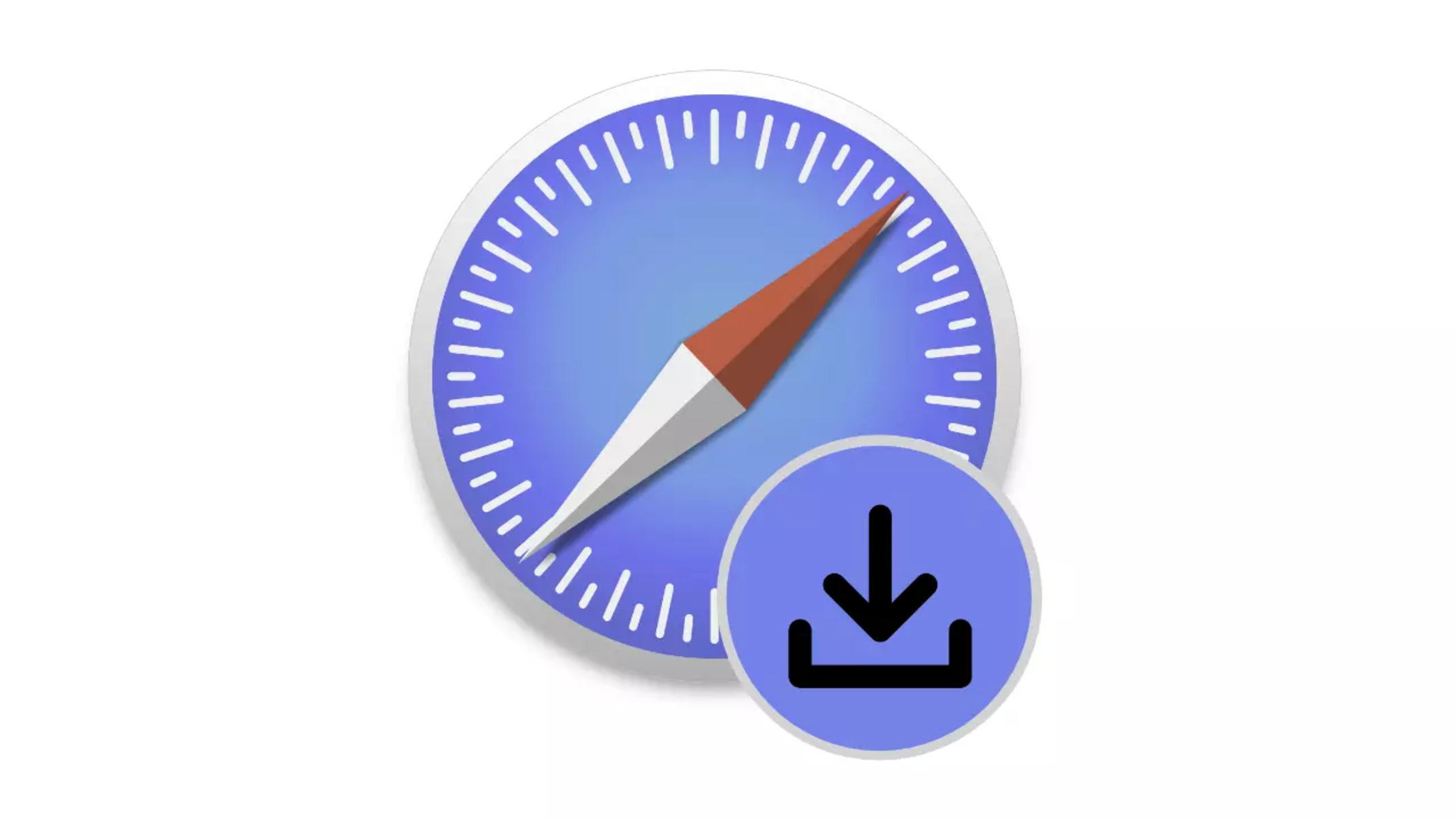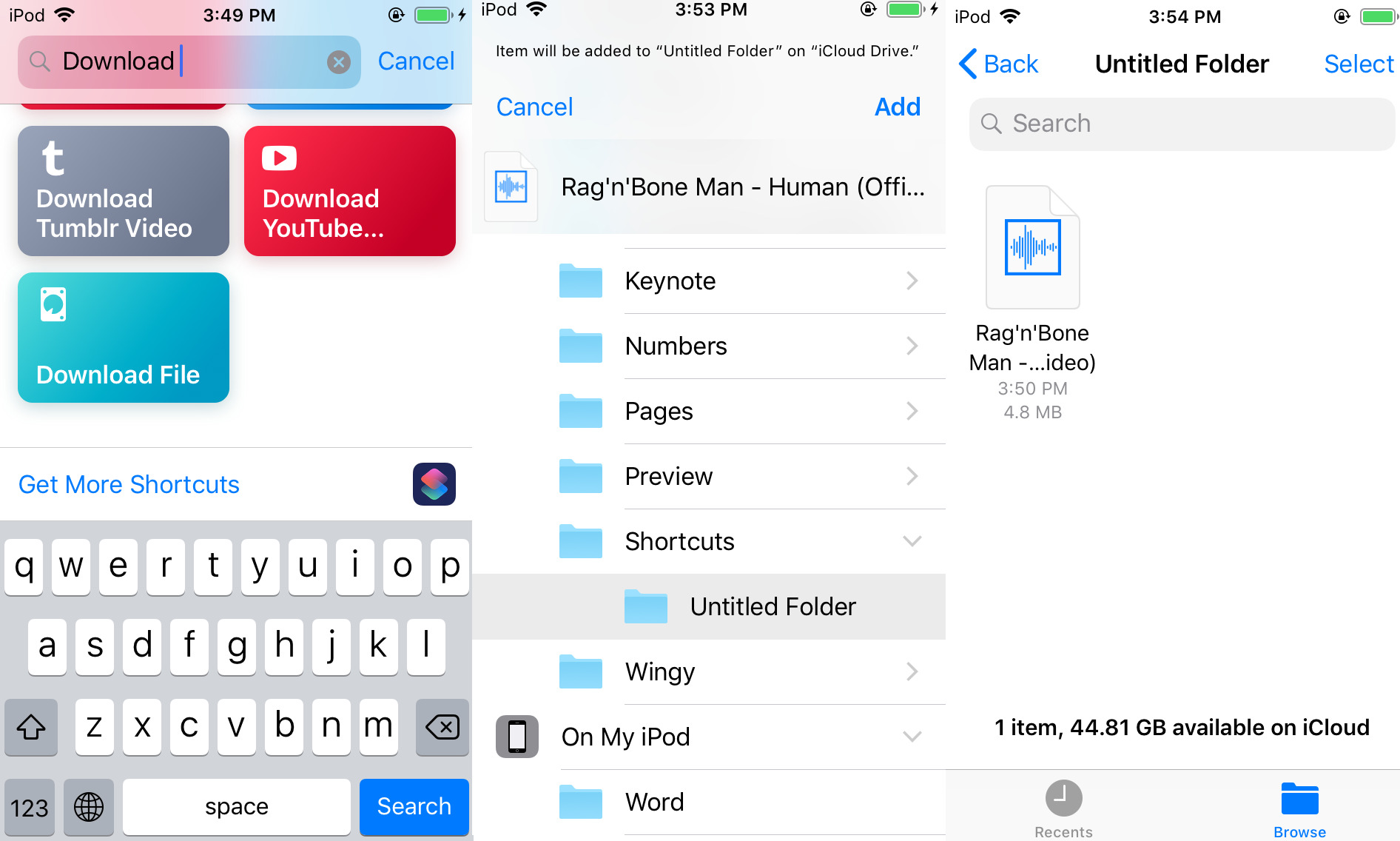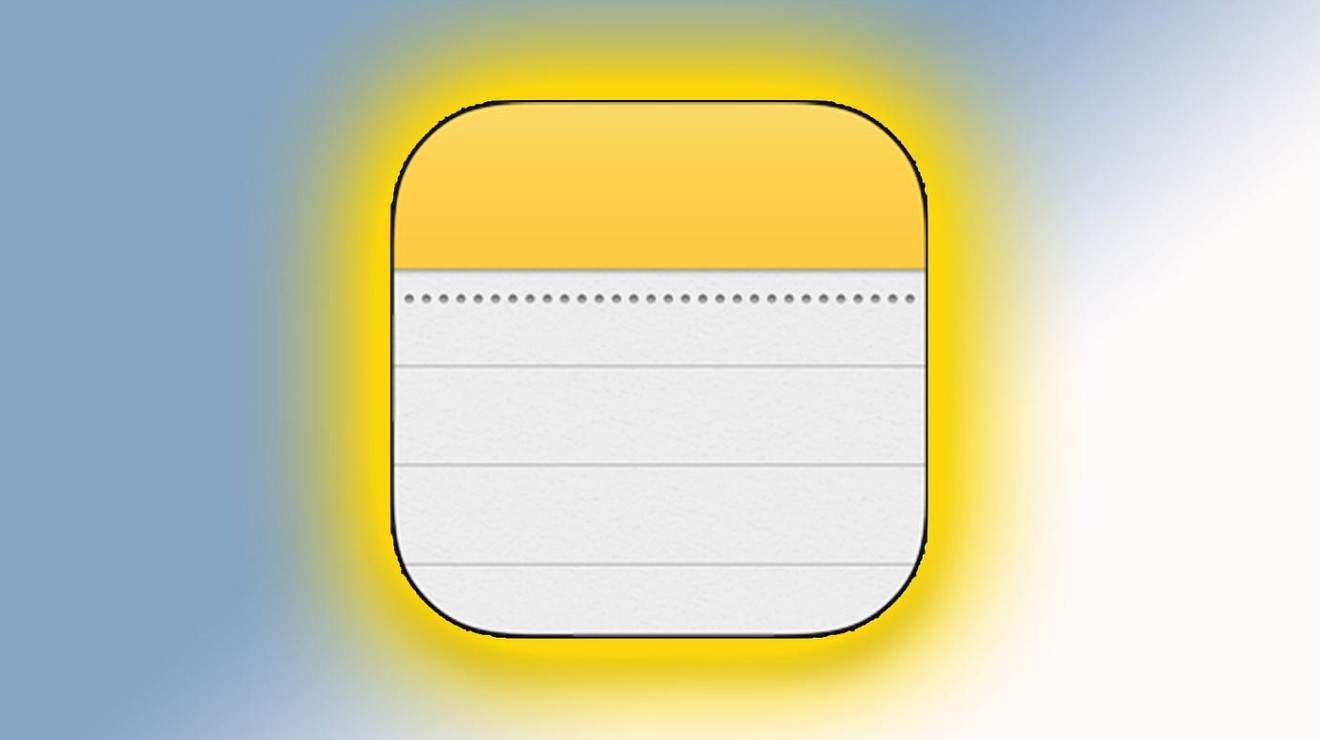Introduction
Downloading PDFs on your iPhone from Safari can be a convenient way to access and store important documents, articles, or forms for offline viewing. Whether you need to save a research paper, a user manual, or a legal document, having the ability to download PDFs directly to your iPhone can streamline your workflow and ensure that you have crucial information at your fingertips, even when you're not connected to the internet.
In this guide, we will walk you through the simple steps to download a PDF from Safari directly to your iPhone. With just a few taps, you can have the PDF file readily available on your device, allowing you to access it whenever and wherever you need it. Whether you're a student, a professional, or simply someone who values easy access to information, learning how to download PDFs on your iPhone can be a valuable skill.
By following the steps outlined in this guide, you'll be able to effortlessly save PDFs from Safari to your iPhone, eliminating the need for third-party apps or complex workarounds. With the seamless integration of Safari and the Files app on your iPhone, you can quickly build a library of essential PDFs that are easily accessible from your device's storage.
So, let's dive into the step-by-step process of downloading PDFs on your iPhone from Safari, empowering you to efficiently manage and access your digital documents with ease.
Step 1: Open Safari on your iPhone
To begin the process of downloading a PDF on your iPhone from Safari, you'll first need to launch the Safari web browser on your device. Safari is the default browser on iOS devices, offering a user-friendly interface and seamless integration with other native apps. You can easily locate the Safari icon on your home screen, typically featuring a compass-like design. Tapping on the Safari icon will open the browser, presenting you with a familiar search bar and navigation controls.
Upon opening Safari, you'll be greeted by the start page, which may display your frequently visited websites, bookmarks, or suggested content. From here, you can either enter a specific web address in the search bar or choose from your saved bookmarks to navigate to a particular website. If you have a direct link to the PDF you wish to download, you can enter the URL in the search bar and proceed to the website hosting the PDF file.
Safari provides a smooth and intuitive browsing experience, allowing you to seamlessly navigate web pages, interact with online content, and access a wide range of documents and media. Whether you're exploring the latest news, conducting research, or accessing educational resources, Safari serves as a versatile gateway to the vast expanse of the internet, right at your fingertips.
As you open Safari on your iPhone, take a moment to familiarize yourself with the browser's features and functionality. You can utilize tabs for multitasking, access the share menu to save or share web content, and leverage the search bar for quick and efficient navigation. Safari's user-centric design and robust performance make it an essential tool for accessing online resources, including PDF files that you may want to download and store on your device for future reference.
By opening Safari on your iPhone, you're embarking on the initial step towards seamlessly downloading PDFs and expanding your digital library with valuable content. With Safari's accessibility and versatility, you can effortlessly embark on a journey through the vast landscape of the internet, discovering and acquiring essential PDFs to enrich your digital experience on your iPhone.
Step 2: Find the PDF you want to download
Once you have Safari open on your iPhone, the next step is to locate the specific PDF that you want to download. There are several ways to find PDFs on the web, whether you're searching for academic articles, legal forms, user manuals, or any other type of document saved in PDF format.
One common method is to use a search engine to look for the PDF. You can simply enter relevant keywords or the title of the document followed by "PDF" in the search bar. This will help narrow down the results to PDF files, making it easier to find the specific document you're seeking to download.
Another approach is to visit websites that are known to host PDFs, such as academic repositories, government portals, or digital libraries. These platforms often provide a wealth of PDF resources, ranging from scholarly papers and research studies to official forms and publications. By navigating to these websites within Safari, you can explore their content and identify the PDFs you wish to download.
Furthermore, if you have a direct link to the PDF you want to download, you can enter the URL in Safari's search bar. This will take you directly to the webpage hosting the PDF file, allowing you to initiate the download process without the need for extensive navigation.
Safari's search functionality and web browsing capabilities empower you to efficiently locate PDFs across the internet, giving you the flexibility to access a diverse array of digital documents. Whether you're conducting research, accessing reference materials, or simply exploring informative content, Safari serves as a gateway to a vast repository of PDF resources, enabling you to find and download the documents that align with your interests and needs.
By leveraging Safari's intuitive search and navigation tools, you can embark on a seamless exploration of the web, uncovering valuable PDFs that cater to your specific requirements. This step sets the stage for the subsequent actions that will lead to the successful download and storage of the desired PDF on your iPhone, enhancing your ability to access and reference essential documents at your convenience.
Step 3: Tap on the PDF link
After locating the PDF you wish to download within Safari on your iPhone, the next crucial step is to tap on the PDF link to initiate the download process. When browsing a webpage that contains a link to a PDF document, you'll typically encounter a highlighted or underlined text, an icon, or a button that signifies the presence of the PDF file. This visual indicator serves as a direct pathway to access and download the PDF onto your device.
Upon identifying the link to the PDF, gently tap on it using your fingertip. This action prompts Safari to recognize the PDF file and initiate the download sequence. As you tap on the PDF link, you may observe a brief loading animation or a notification indicating that the file is being prepared for download. This seamless interaction with the PDF link signifies the commencement of the download process, setting the stage for the subsequent steps that will lead to the successful acquisition of the PDF on your iPhone.
Tapping on the PDF link within Safari exemplifies the user-friendly and intuitive nature of the browsing experience on iOS devices. By engaging with the link, you're actively signaling your intent to access and save the PDF, leveraging the inherent functionality of Safari to seamlessly interact with digital content. This tactile interaction underscores the seamless integration of Safari with the broader iOS ecosystem, empowering users to effortlessly engage with online resources and acquire valuable documents with ease.
As you tap on the PDF link, you're taking a decisive step towards securing the desired document on your iPhone, enabling you to build a comprehensive library of digital resources that cater to your informational needs. This action encapsulates the seamless synergy between Safari and PDF files, allowing you to harness the power of your iPhone to efficiently manage and access essential documents, further enhancing your digital experience and productivity.
By tapping on the PDF link within Safari, you're actively shaping your digital environment, curating a collection of PDFs that align with your interests, professional pursuits, or academic endeavors. This pivotal interaction sets the stage for the subsequent stages of the download process, ultimately leading to the successful acquisition and storage of the PDF on your iPhone, enriching your ability to access and reference vital documents at your convenience.
Step 4: Select "Download" or "Save to Files"
After tapping on the PDF link within Safari on your iPhone, you will be presented with options to either "Download" the PDF directly or "Save to Files," depending on the website's configuration and the specific actions enabled by the webpage. These options serve as pivotal pathways to acquire and store the PDF on your device, offering distinct functionalities that cater to different user preferences and organizational needs.
When the "Download" option is available, tapping on it triggers the direct acquisition of the PDF onto your iPhone. This streamlined process ensures that the PDF file is promptly downloaded and saved within the designated storage space on your device, allowing for quick and convenient access without the need for additional steps or interactions. The "Download" functionality exemplifies the seamless integration of Safari with the iOS ecosystem, providing users with a straightforward method to acquire digital content and expand their personal library of PDFs.
Alternatively, if the "Save to Files" option is presented, tapping on this selection initiates a more nuanced approach to managing the PDF. By choosing to "Save to Files," you gain the ability to specify the destination folder or location within the Files app where the PDF will be stored. This level of customization empowers you to organize your digital documents according to your preferred structure, facilitating efficient retrieval and categorization of PDFs based on their relevance, purpose, or subject matter. The "Save to Files" feature underscores the flexibility and user-centric design of Safari and the iOS environment, allowing for personalized management of downloaded PDFs to suit individual workflow and organizational preferences.
The availability of both "Download" and "Save to Files" options within Safari reflects the platform's commitment to providing users with diverse and intuitive methods to acquire and store digital content. Whether you opt for the direct download approach or the tailored file management capabilities offered through the Files app, Safari ensures that you can seamlessly integrate downloaded PDFs into your device's storage, enhancing your ability to access and reference essential documents with unparalleled ease and efficiency.
By selecting "Download" or "Save to Files" within Safari, you're actively shaping the organization and accessibility of your digital documents, leveraging the inherent capabilities of the iOS ecosystem to curate a comprehensive library of PDFs that align with your professional, academic, or personal pursuits. This pivotal decision marks the culmination of the download process, solidifying your ability to seamlessly acquire, manage, and access vital PDFs on your iPhone, enriching your digital experience and productivity.
Step 5: Access the downloaded PDF from the Files app
Once you have successfully downloaded a PDF from Safari on your iPhone, accessing the file is a seamless process through the Files app. The Files app serves as a centralized hub for managing and organizing your digital documents, providing a user-friendly interface that facilitates effortless navigation and retrieval of downloaded content.
To access the downloaded PDF, simply navigate to the Files app on your iPhone. Upon launching the app, you'll be greeted by an intuitive file management interface, featuring familiar navigation controls and organizational tools. The app's design prioritizes ease of use, allowing you to swiftly locate and interact with your downloaded PDFs.
Within the Files app, you can explore various locations where the PDF may be stored, including the "Downloads" folder, which serves as a default destination for downloaded files. By accessing the "Downloads" folder, you can quickly locate the recently acquired PDF and initiate further actions, such as moving the file to a different location, renaming it, or sharing it with other apps and users.
Furthermore, the Files app enables you to create custom folders to categorize and store your PDFs based on specific criteria, such as subject matter, project relevance, or document type. This organizational flexibility empowers you to curate a personalized library of PDFs, streamlining your ability to retrieve and reference essential documents with precision and efficiency.
Upon locating the downloaded PDF within the Files app, you can leverage the app's built-in functionalities to interact with the file as needed. Whether you intend to review the content, share it with colleagues, or integrate it into other productivity apps, the Files app provides a versatile platform for managing your digital documents with unparalleled convenience.
By accessing the downloaded PDF from the Files app, you're harnessing the full potential of your iPhone's file management capabilities, ensuring that your acquired PDFs are seamlessly integrated into your digital workflow. This final step in the process of downloading and accessing PDFs on your iPhone underscores the device's versatility as a comprehensive tool for managing and interacting with essential digital content, empowering you to stay organized and productive in your professional and personal endeavors.







